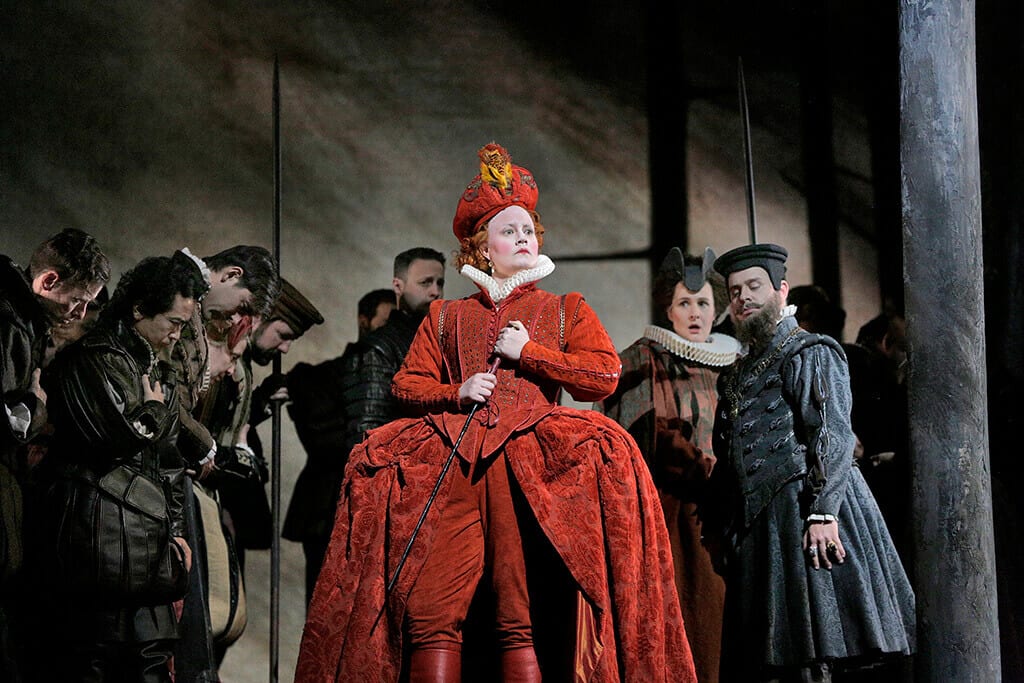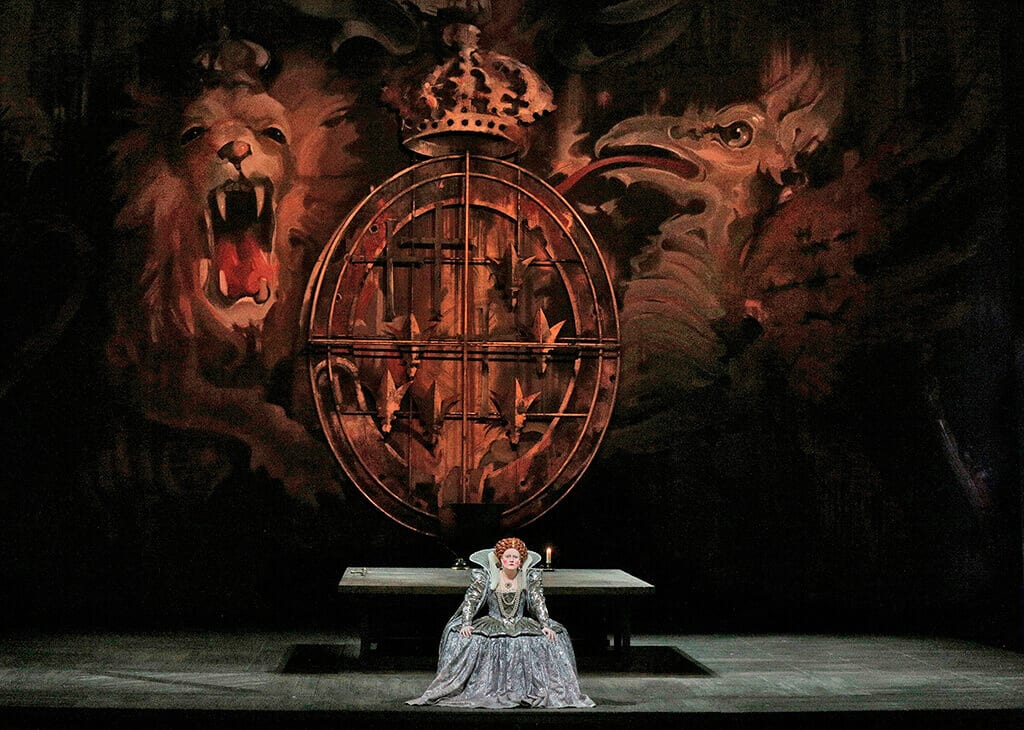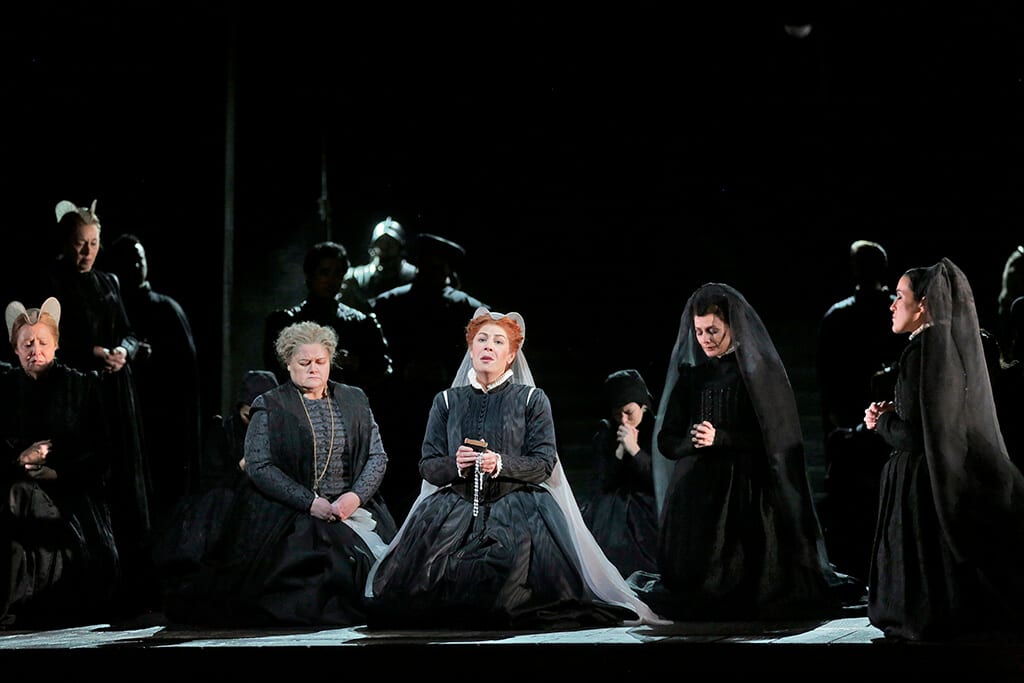Star Power; have you ever had a friend say you must try something unfamiliar because there is a star you absolutely cannot miss? That is the experience of attending Sondra Radvanovsky’s bravura performance in the title role of Maria Stuarda at the Metropolitan Opera. Even if you don’t know this opera you will feel her power. Radvanovksy has a big voice, yet she masters strong but soft tones that lift across the stage like something between clouds and prayers. As she does, the entire audience sits silent, enthralled. We are watching and hearing a star be a star – leading us to another place, another kind of experience, thrilled to be taken for the ride.
The opera was composed by Donizetti in the 1830s when the tale of Mary Stuart was all the rage throughout Europe. In that “romantic” age she was the tragic lost heroine, the voice of love, and faith who could have saved England had she not been supplanted by the cold, cruel calculations of her sister Elizabeth. If you are a fan of Tudor dramas – or their Game of Thrones translations – you will quickly recognize the erotic and political conflicts that animate this opera. We see that from the moment they enter the house, for the proscenium curtain is covered by a red-splashed heraldic painting of a raging lion and ferocious eagle clashing over a crown. Yet this is Tudor drama as it might be retold by Elena Ferente: all matters of state are filtered through the pride and passion of two supremely intense, opposed, sisters.
The opera begins as the stiff, mannish Elizabeth is considering marrying the brother of the king of France. This Elizabeth moves in odd crabwise ways that are more comedic than narrative, but her arias are compelling. She does not want to give up the freedom of being queen, and the canny Elizabeth fears/suspects that her true intimate, Leicester, may have fallen for her imprisoned sister, Mary.
Mary had grown up in France then reigned as Queen of Scotland. A Catholic, she clashed with her Protestant nobles and fled to her sister for protection. Now, she awaits Elizabeth’s pleasure. Even in severe prisoner’s black Mary is a constant threat to Elizabeth – whose red hoop skirts are awkward, not becoming. Mary is beautiful, has had many loves and husbands, and moves people with her piety. Elizabeth’s advisor Cecil, also in black, supplies a resonant bass baritone of grim statecraft as he urges Elizabeth to execute her sister and protect the throne. As Act 1 comes to a climax the two sisters face off in a forest near Mary’s prison.
John Macfarlane’s stripped down black platforms could be a court room, or a boxing ring: the confined space in which the fate of two sisters will be decided. Donizetti’s music is lyrical and propulsive: a current of melody enticing, inspiring, but ever pressing the singers, and the audience forward towards moments of confrontation and crisis. Mary attempts to beg her sister for mercy, but then erupts in cursing contempt for what she sees as the illegitimate queen. Her curse is her death warrant.
The final act takes place in Mary’s cell and on the way to the execution block, as she prepares for death. Her arias are plaintive, prayerful, moving, tragic. Even as she mounts the steps to her execution, surrounded by a chorus in black, we are invited to see her as the victor over her stiff, inhuman sister. Go to be transfixed by Radvanovsky and to feel Donizetti turn emotion into pure sound.





